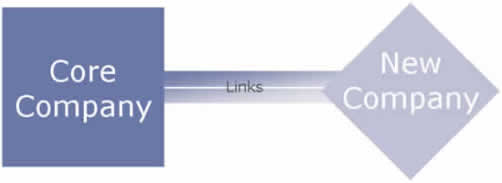|
|
| Home - Industry Article - Apr 06 Issue |
Achieving Breakthrough Growth: From Ideas to Execution |
By Vijay Govindarajan and Chris Trimble, Professors, Tuck School of Business
How can companies simultaneously excel at today's business while building tomorrow's? It is a delicate organizational task. But new principles based on five years of research show that established organizations can build new futures when they design breakthrough new business units so that they can forget, borrow, and learn.
Strategy used to be about protecting existing competitive advantage. Today it is about finding the next advantage. Thus, the central task of an organization's leaders is to balance managing the present with creating the future.
Creating the future requires both breakthrough ideas and breakthrough execution. Ideas are crucial, but even the best ones are speculative. Thus, rule number one is that in any great innovation story, the idea is only Chapter 1. One company that was able to make the transition from breakthrough idea to profitable new business unit is New York Times Digital (NYTD), the internet unit of The New York Times Company. We draw the other nine stories from comparisons among several similar stories.
New York Times Digital
In 1995, The New York Times Company launched New York Times Digital. Recognizing the magnitude of the transformation they faced, they turned to an outsider, Martin Nisenholtz, who had spent his entire career developing expertise in interactive communications, to lead NYTD. Martin was put in a senior position – he reported directly to both the general manager and editor of the newspaper. And, he was given a staff that was rich in experience within The New York Times Company.
As a result, NYTD had ready access to newspaper resources, and was off to a fast start. However, by 1997, NYTD's leadership team worried that their operation was not evolving as rapidly as the world of online media. Martin felt constrained by the assumptions that his newspaper colleagues were making about what it would take to build a successful NYTD. Even outside analysts began to wonder if the company was investing heavily enough in the new technology.
In 1999, Russell Lewis chose to reorganize NYTD as a separate business unit. This was a crucial turning point. The reorganization of NYTD included several specific changes. First, Martin was promoted. He reported directly to the corporate president rather than to the newspaper. This is more startling than at first it may appear. NYTD became a peer on the organization chart with a business unit nearly one hundred times its size. In addition, NYTD hired extensively from outside the company, dismantled and rebuilt the product development process, created a new senior policy team, redesigned planning, and explicitly reevaluated culture.
These changes initiated an explosion of creativity. The staff created dozens of new features. Revenues handily exceeded expectations for several quarters. Still, the changes were not without side effects. New tensions arose between NYTD and the newspaper. There were numerous sources, including competition for resources, concerns over protecting the brand and customer relationships, and even simple jealousy. While NYTD was able to grow at the top line, their efficiency and effectiveness suffered as a result of the strains in their relationship with the newspaper.
When the bubble burst, NYTD was in a serious jam. Though revenues were growing, profits lagged. The newspaper's leadership team almost succeeded in reducing NYTD once again to a simple newspaper.com operation, but Russell chose a different path, insisting on an immediate concerted drive to profitability. He also implemented teams at the senior management level to improve cooperation and coordination – in just a few areas, where it mattered most. NYTD achieved profitability a few quarters later.
NYTD evolved into a "distinct-but-linked" organization (Figure 1). "Distinct but linked" means that the new business, or "NewCo," is a fundamentally different organization. However, it is not isolated from the core business or "CoreCo."
Figure: 1 Forget, Borrow, Learn
By comparing the New York Times story to several others, we learned that a distinct-but-linked approach can help NewCo overcome three central challenges of execution for breakthrough new businesses: forgetting, borrowing, and learning.
Forget, Borrow, Learn
By comparing the New York Times story to several others, we learned that a distinct-but-linked approach can help NewCo overcome three central challenges of execution for breakthrough new businesses: forgetting, borrowing, and learning.
- NewCo must forget CoreCo's assumptions about why it wins
- NewCo must borrow CoreCo's assets
- NewCo must learn how to make a profit in its uncertain market
Note the important distinction between what must be forgotten and learned, and what must be borrowed. What NewCo must forget and learn are mindsets, assumptions, and decision biases. On the other hand, what NewCo borrows is assets with concrete value – such as brands, manufacturing capacity, sales relationships, or technical expertise.
|
|


|

